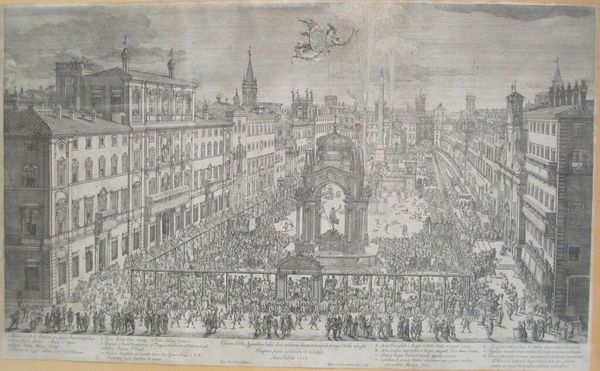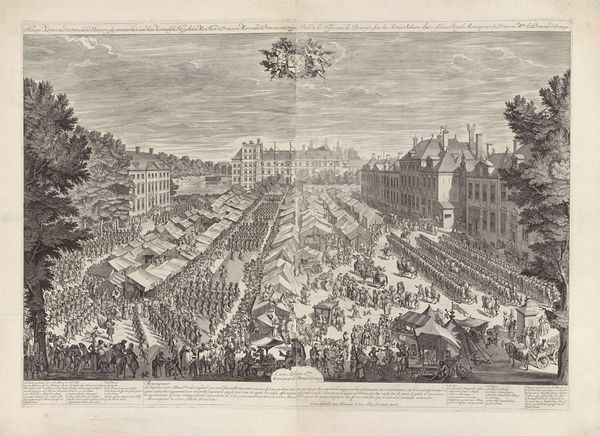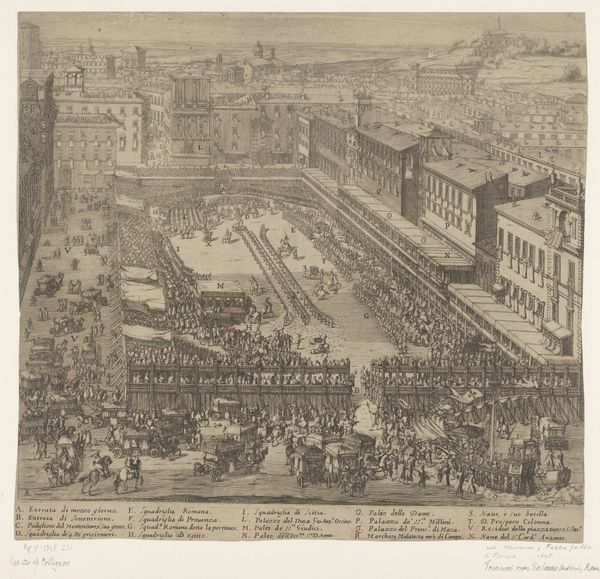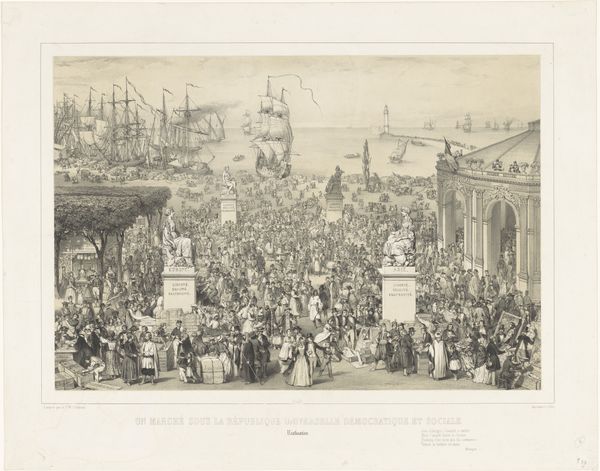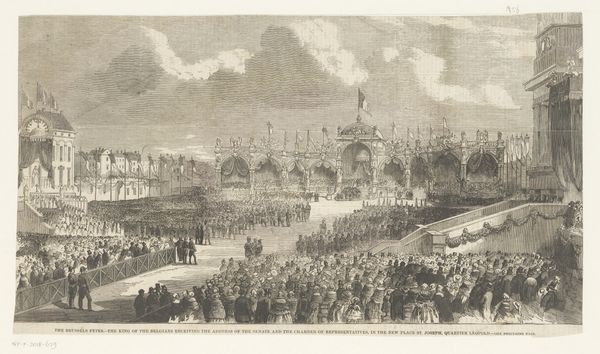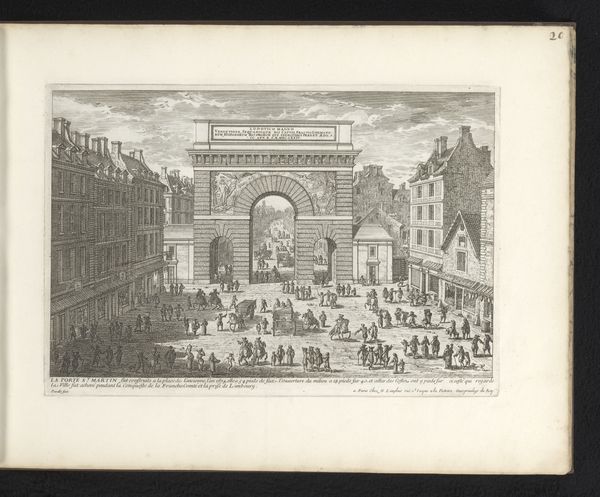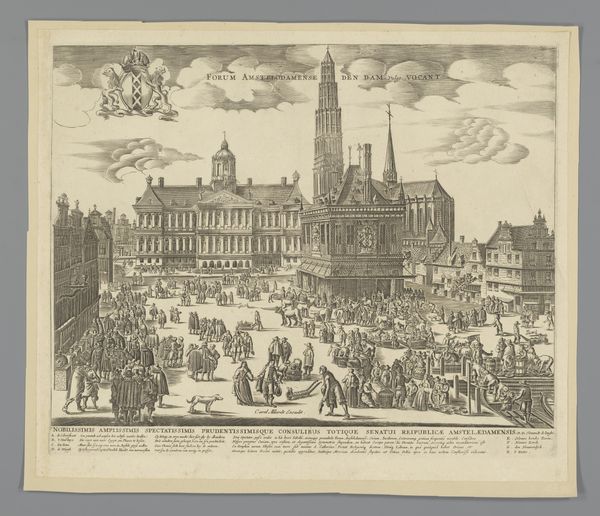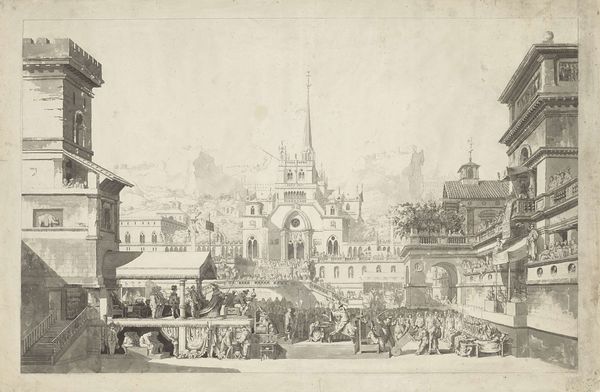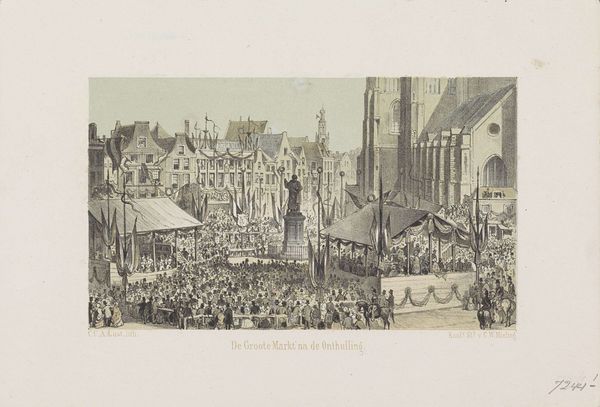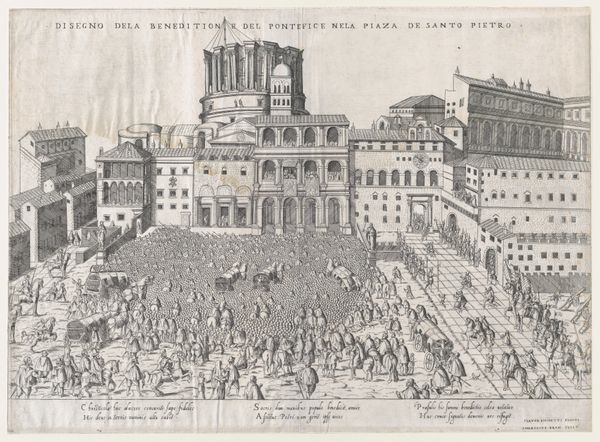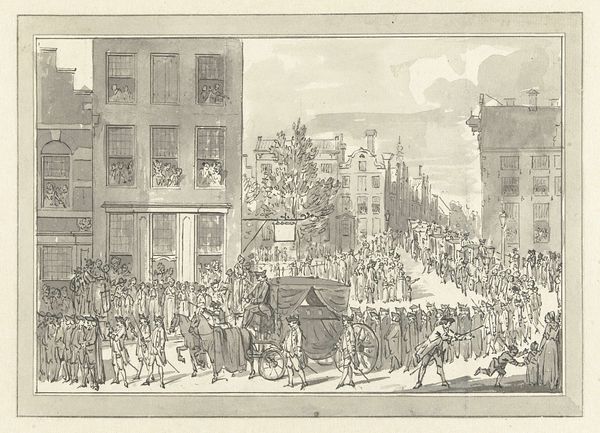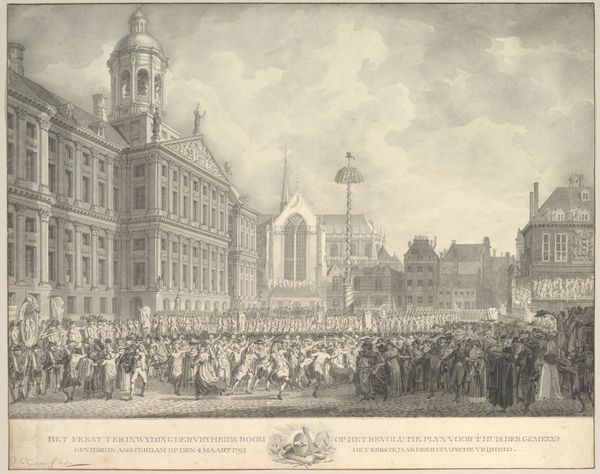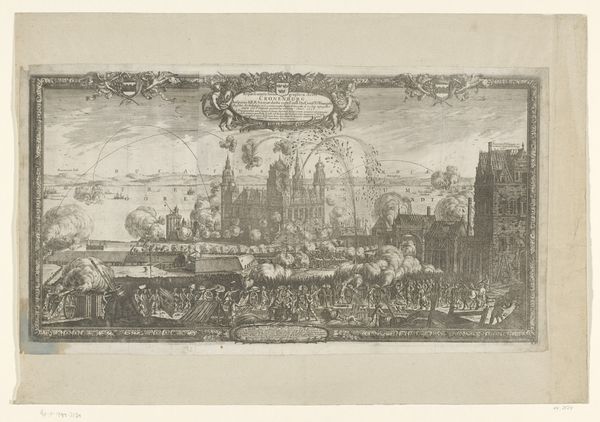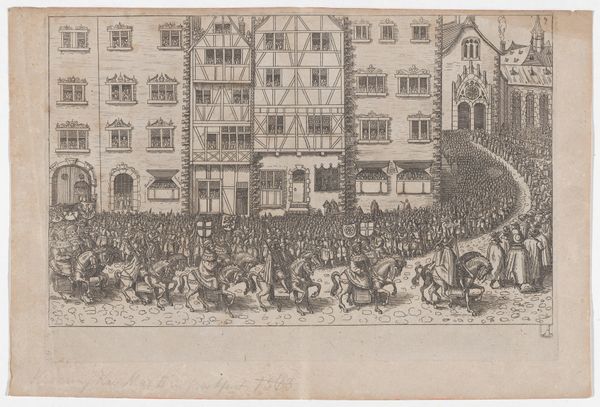
The Feast of the Resurrection in Piazza Navona, Rome, 1650 1650
0:00
0:00
drawing, print, etching, engraving
#
drawing
#
baroque
# print
#
etching
#
etching
#
cityscape
#
history-painting
#
engraving
Dimensions: sheet: 15 3/16 x 24 15/16 in. (38.6 x 63.3 cm)
Copyright: Public Domain
Dominique Barrière’s “The Feast of the Resurrection in Piazza Navona, Rome” was made around 1650, using the technique of etching. This is a printmaking process, where a metal plate is coated with wax, then scratched with a needle to expose the metal. The plate is then dipped in acid, which bites into the exposed lines, creating grooves. The incised plate is then inked, and the surface wiped clean, leaving ink only in the etched lines. Finally, paper is pressed against the plate, transferring the ink and creating the print we see here. The result is a mirror image of the original design, with a characteristic slightly raised texture on the paper. The etching process allowed Barrière to capture an incredibly complex scene with astonishing detail, but the labor-intensive technique also underscores the economics that underpinned such grand spectacles. The feast was an event for the public, but its representation was itself a commodity, reflecting the intersection of art, politics, and commerce in Baroque Rome.
Comments
No comments
Be the first to comment and join the conversation on the ultimate creative platform.
